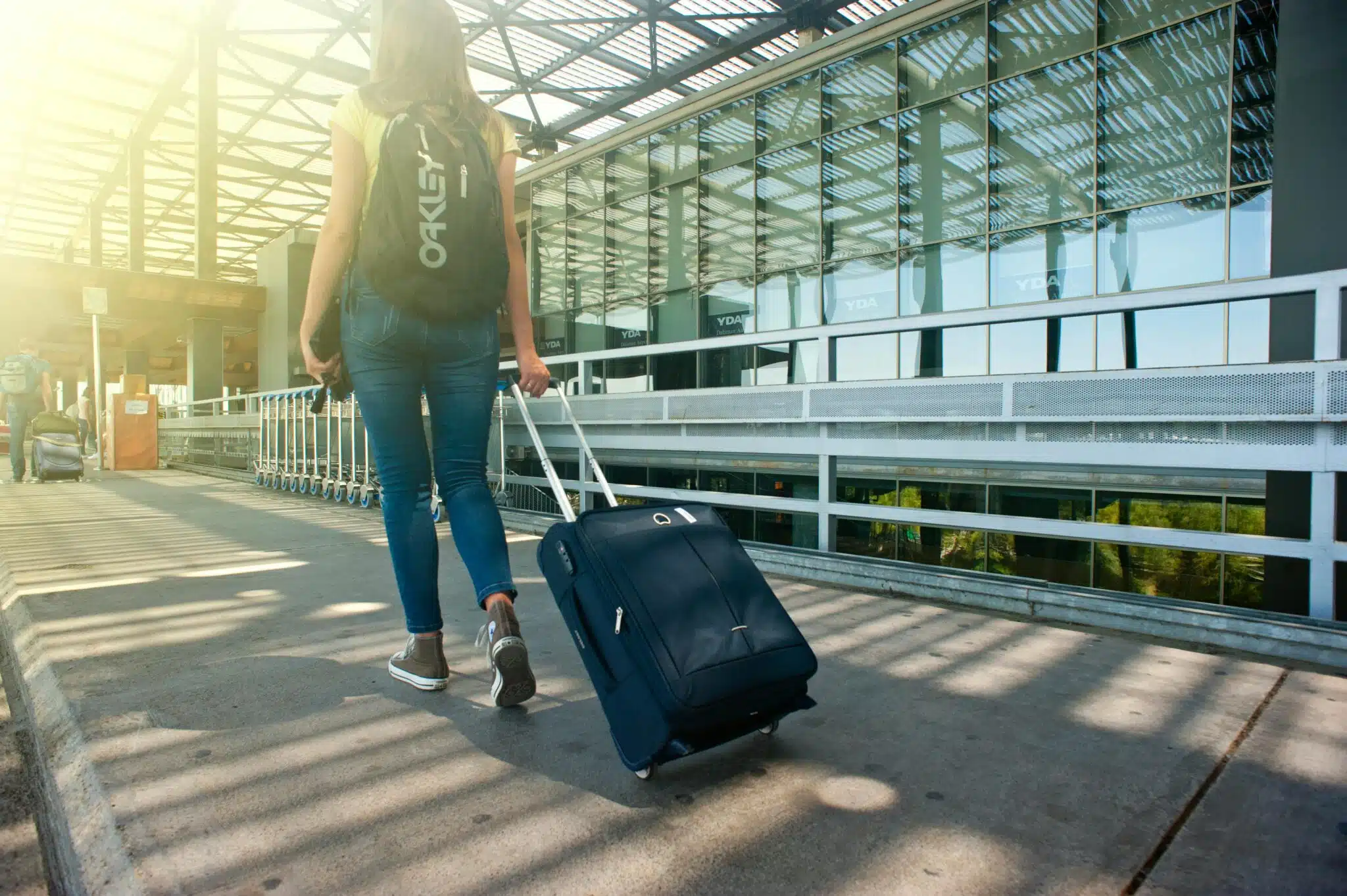Know Before You Go: A Guide to Smartraveller Advisories
Unpacking the Australian Government’s Travel Warnings
Navigating Travel Risks: Understanding Smartraveller’s Advice Levels
Advisories use a four-tiered system to flag potential dangers in different countries and regions, helping you make informed decisions.
Here’s a breakdown of the system:
- Level 1: Exercise Normal Safety Precautions – This is your green light! The destination poses no more risk than you’d encounter at home. Just be sure to follow basic travel safety practices.
- Level 2: Exercise a High Degree of Caution – Proceed with awareness. This level indicates heightened risks like petty crime or political unrest. Extra vigilance and research on specific areas within the destination are recommended.
- Level 3: Reconsider Your Need to Travel – Think twice! This signifies significant safety concerns, such as civil unrest or natural disasters. Consider postponing your trip or choosing a safer destination.
- Level 4: Do Not Travel – Avoid at all costs. This level is reserved for extremely dangerous situations like war zones or outbreaks of serious infectious diseases. Travel is strongly discouraged.
By understanding these Smartraveller advisories, you can navigate travel risks effectively, ensuring a safe and enjoyable journey.
Level 1: All Systems Go – Exercise Normal Safety Precautions
Low-risk adventures: Destinations at Level 1 pose similar safety concerns to Australia. You can expect functioning law enforcement, decent healthcare, and reliable emergency services.
Travel insurance: Rest easy, VIM Cover’s travel insurance policies will cover you in these regions, as long as you stick to the terms and conditions.
Staying safe on the go:
- Respect the locals: Be mindful of local laws and customs, which might differ significantly from what you’re used to back home.
- Think like a larrikin, but play it safe: Use your Aussie common sense and take basic safety precautions.
- Be alert, but don’t be scared: Petty theft and scams can happen anywhere, so stay vigilant.
- The world’s a crazy place: Remember, even low-risk destinations aren’t immune to unforeseen threats like terrorism. Stay informed by checking local media and Smartraveller for updates.
- Plan for the unexpected: Consider VIM Cover’s travel insurance that covers medical expenses and all the activities you plan to do on your trip.
By following these tips, you can explore Level 1 destinations with confidence and have a cracking time!
Level 2: Tread Carefully – Exercise a High Degree of Caution
Proceed with caution: While Level 2 destinations aren’t outright no-go zones, they require extra vigilance. You might encounter situations like political unrest, heightened security threats, or a higher risk of crime. Law enforcement and healthcare might also be less reliable than back home.
Insurance considerations: Most travel insurance will still cover you at Level 2, but double-check the fine print of your specific policy.
Staying safe on your travels:
- Do your research: Identify the specific risks in your chosen destination and take additional precautions accordingly.
- Jabbed-up and ready: Consult a healthcare professional about recommended vaccinations and potential health risks.
- Stay alert: Keep your wits about you and be mindful of your surroundings at all times.
- Stay informed: Monitor local media and Smartraveller for updates on the situation in the region.
- Be prepared for the unexpected: Security conditions can change quickly, so stay adaptable.
- Consider comprehensive travel insurance: Look for a policy that covers medical evacuation and repatriation in case of emergencies.
By taking these steps, you can navigate Level 2 destinations with a healthy dose of caution and still have a memorable trip.
Level 3: Think Twice – Reconsider Your Need to Travel
Serious risks ahead: Level 3 destinations pose significant dangers, including ongoing terrorism threats, civil unrest, violent crime, or serious health hazards. Natural disasters can also trigger this warning. The Australian Government strongly advises against all but essential travel to these regions.
Insurance considerations: Travel insurance for Level 3 destinations might be limited or very expensive. Carefully review your policy’s terms and conditions before booking.
Planning for the worst:
- Non-essential travel? Reconsider: As the warning suggests, think twice about any non-critical travel to these areas.
- Know the threats: Research the specific dangers you might face and tailor your plans accordingly.
- Safe accommodation: Choose secure and well-located accommodation for peace of mind.
- Transportation: Consider alternative travel options if public transport seems risky.
- Have a plan B: Discuss emergency response plans with travel companions and have a clear way to get out if needed.
- Updated documents: Ensure your passport and other travel documents are valid and readily available.
- Specialised insurance: You might need a specific travel insurance policy designed for high-risk destinations.
By taking these precautions seriously, you can make an informed decision about traveling to Level 3 destinations. Remember, your safety comes first.
Level 4: Steer Clear – Do Not Travel
Danger zone: Level 4 destinations are considered extremely dangerous by the Australian Government. This could be due to a high risk of terrorist attacks, ongoing war, violent crime, or a combination of these threats.
Most travel insurance policies won’t cover you for Level 4 destinations. If a region gets upgraded to this level after you buy insurance, you might be able to claim cancellation costs, but check the Product Disclosure Statement carefully.
Safety first:
- Don’t go! Seriously, the safest option is to avoid these regions altogether.
- Ignoring the warning? If you choose to travel despite the advisory, exercise extreme caution. Consider professional security advice and personal protection if possible.
- Plan for emergencies: Have a detailed escape plan in place and know the Australian Government’s limited ability to assist with evacuation during a crisis.
- Visas and border crossings: Research visa requirements and be aware of the dangers associated with crossing borders in these areas.
- Specialised insurance: You’ll likely need a specific travel insurance policy designed for high-risk destinations.
Remember, Smartraveller advisories are there to keep you safe. By taking them seriously, you can make informed decisions about your travels and avoid unnecessary risks.
Travel Warnings and Your Insurance: Need to Know
Travel warnings can impact your travel insurance coverage. Here’s the lowdown:
- High-risk destinations (Level 3: Reconsider or Level 4: Do Not Travel): Some policies might exclude these regions altogether.
- Beware of regional variations: A country could be Level 1 (low risk) overall, but specific areas might be Level 3 or 4. Double-check the warnings for all your planned destinations and confirm coverage with your insurer.
- Terrorism exclusions: Some policies may have limitations on coverage for terrorism-related events. This could affect medical expenses, evacuation, cancellation, delays, alternative transportation, or even death and disability benefits.
Before you buy travel insurance:
- Read the Product Disclosure Statement (PDS) carefully. This document outlines exactly what’s covered and what’s not.
- Consider exclusions: Be aware of any exclusions related to travel warnings or terrorism events.
What Triggers Travel Advisories? Keeping You Safe when you travel.
The Australian Government, through the Department of Foreign Affairs and Trade (DFAT), keeps a watchful eye on global events to ensure your safety overseas. This means issuing travel advisories whenever potential risks arise that could impact your health, security, or well-being. Here’s a rundown of the events that might trigger a travel advisory upgrade:
- Security threats: This includes the possibility of terrorist attacks, violent crime, or kidnapping.
- Natural disasters: From earthquakes and tsunamis to cyclones, floods, and fires, these events can significantly disrupt travel plans and safety.
- Outbreaks: Disease outbreaks, epidemics, and pandemics can pose serious health risks to travellers.
- Political instability: Civil unrest, riots, and war can all create dangerous situations for travellers.
By staying informed about potential threats, you can make informed decisions, avoid risky situations, minimise dangers, and be prepared for anything your trip throws your way.
Why Travel Warnings and Insurance Go Hand-in-Hand? Sharing the Risk
Travel insurance works on a shared-risk principle. Travellers pay premiums into a pool, used to pay out claims when things go wrong. Think of it as a bunch of mates chipping in to help each other out in a sticky situation.
So, why do travel warnings matter to your insurance? It’s the same reason they consider risky activities or intoxication.
If a traveller ventures into a high-risk zone (Level 3 or 4) despite a warning, they’re knowingly increasing the chance of needing a claim. This wouldn’t be fair to other travellers who pay premiums and avoid unnecessary risks. These situations are typically outlined in the Product Disclosure Statement (PDS) through terms, conditions, limits, and exclusions.
Without considering travel warnings, insurance premiums would skyrocket for everyone. Imagine the pool being drained too quickly because travellers kept taking unnecessary risks!
By understanding travel advisories and how they impact insurance, you can make informed choices and ensure you’re properly covered for a smooth and safe adventure.
Picking a Perfect Spot: Choosing a Safe Destination for Your Aussie Adventure
Minimise mishaps and maximise memories! Here’s a cracking guide to choosing a safe destination for your next trip:
Step 1: Sunny Side Up – Find a Safe Destination
- Safety First: Start by researching global safety reports like the 2017 Global Peace Index. This will give you a broad idea of the world’s safest countries.
- Tailor Your Trip: Once you have some safe options, consider which destinations align with your travel style and interests. If relaxing on pristine beaches is your dream, Portugal might be a better choice than Greece or Thailand (based on the 2017 Index).
- Adventure Awaits: For a ski or snowboard trip, Austria, Canada, and New Zealand are all fantastic choices, and they all ranked highly in safety for 2017.
Safety meets wanderlust! By following these steps, you can narrow down your options and pick a destination that ticks all the boxes – safety, fun, and an unforgettable Aussie adventure!
Step 2: Dig Deeper – Researching Your Chosen Destination
Now you’ve got some safe contenders, time to delve into each option! Here’s your Aussie research kit:
- Smartraveller intel – Head to https://www.smartraveller.gov.au/ for the latest travel advisories on your shortlisted destinations.
- Travel blog bonanza – Get real-life experiences from seasoned travellers! Dive into travel blogs for first-hand accounts, itinerary inspiration, and insider tips.
- Get general destination info and expert advice.
- Read blogs for safe areas, attraction recommendations, top-notch accommodations, and things to avoid.
By using this research arsenal, you can make an informed decision and pick the destination that best suits your travel style and keeps you safe on your adventure!
Step 3: Lock it in, Cobber! Booking Your Dream Holiday
Destination chosen? Time to secure your spot!
- Accommodation Ahoy! Search booking websites to compare prices and find the perfect place to rest your head. Reputable booking sites generally offer greater security than small, independent operators.
- Safety First, Fun Later: Consider the security of your chosen accommodation and its location. Research transport options, especially airport transfers.
- Trusted Travels: Only book tours with recognised and reputable companies. This ensures you’re in safe hands and get the most out of your experience.
Get the right travel insurance to cover you for unexpected events and medical mishaps.



